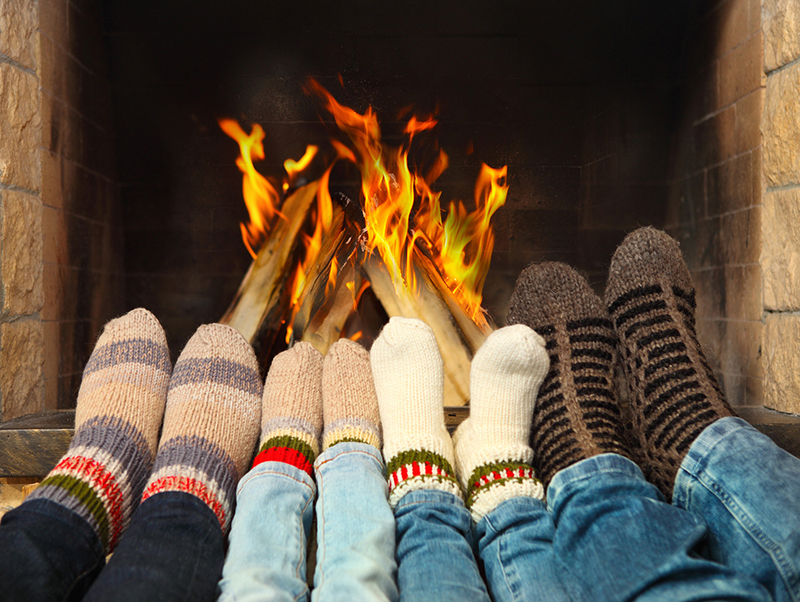A fireplace provides warmth while avoiding the costs that come with turning on the heater, but how do you stay safe with a live fire in your home?
As winter chills the temperature and natural gas prices on the rise, you may be tempted to light your fireplace and warm yourself up the old fashioned way. It can be comfortable and provide a sense of nostalgia watching the fire dance and hearing it crackle under the heat. But the fact remains that it is a live flame and the smallest spark could cause a fire in your home. Here are some fireplace safety tips to keep you and your home safe.
Clean the Chimney
The chimney is directly affected by the burning of wood. As wood burns it releases smoke, soot, and creosote, all of which are toxic to us. Hire a chimney sweep to make sure your chimney is free of any buildup; a clogged chimney can force smoke back down into your home which can cause suffocation.
Cap the Chimney
Make sure that your chimney is well capped in order to allow smoke out but disallow foreign objects in. A well-capped chimney keeps out rain and snow, along with leaves, and small animals like squirrels and birds from coming in and wrecking your home.
Use Dry Hardwood
Only use dry hardwoods, like oak, to fuel your fires. A byproduct of burning wood is a creosote, a carcinogenic chemical that builds up in your chimney. Hardwoods produce less of this chemical which is why you should only burn the hardwoods. Softer and resinous woods, like pine, are known for producing more of this harmful carbon-based chemical.
Make sure that your home is protected with the right
home insurance policy.
Contact Abatelli Group, Inc. for a proper policy on your insurance needs.


